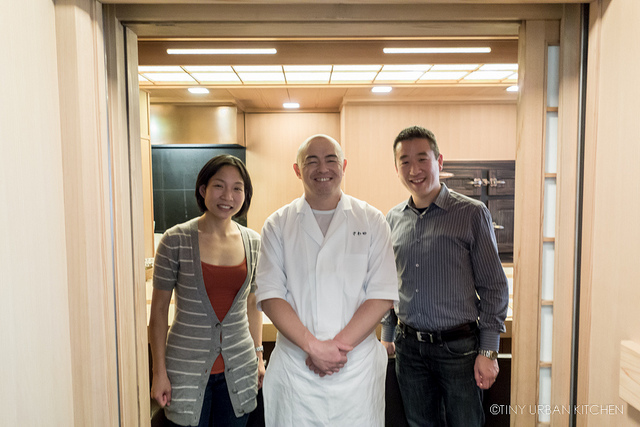
This is the fifth post in the series titled Tasting Tour of Tokyo detailing my recent trip to Japan. Other posts include Kikunoi Akasaka, Rokurinsha, Mikawa Zezankyo, and Kaoriya.It’s doesn’t get much more personal than this.David Chang of Momofuku fame calls it “a breath of fresh air”, naming Sushi Sawada his favorite sushi restaurant in the world. The Michelin Guide has awarded it two stars. It is frequently uttered in the same breath as sushi giants Sushi Mizutani, Sukiyabashi Jiro, and Sushi Saito. Many consider it among the best in Tokyo.Dining at Sushi Sawada is nothing like eating out in a normal restaurant in Japan. It’s even markedly different from most high-end sushi experiences in Tokyo. Missing are the multitudes of sushi indentured “servants” making rice, massaging octopus, or churning out all sorts of other tasks in the back kitchen. There’s not a single server to take your beer order or bring you more tea.Instead, it’s just Sawada-san and his wife.
Sawada-san and his wife prepare every aspect of the entire multi-course omakase. You get to watch them from one of six exclusive seats at the tiny sushi bar. It’s an evening full of fascinating visual delights - from the mesmerizing transformation of a piece of fish as it slowly roasts over hot stones to Sawada-san’s ninja-like construction of sushi.
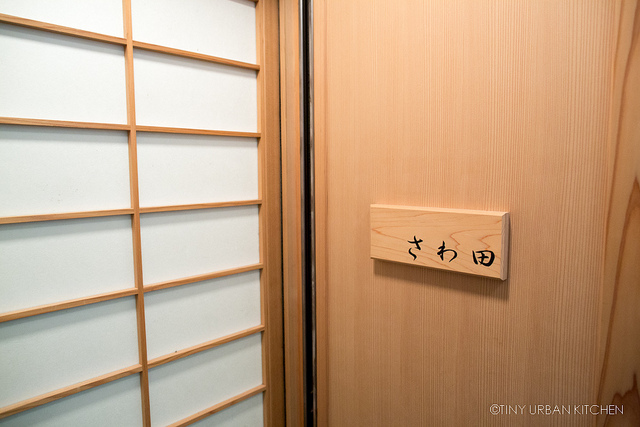
Entrance to the restaurant on the third floor
We arrive on a cool, autumn Sunday just around noontime. Sushi Sawada only takes one seating during lunch, and we are the first to arrive.
A shy but pleasant young woman bows with traditional Japanese humility and offers to take our huge backpacks (filled with camera equipment, among other things) and our coats. The tiny barstools at the small restaurant don’t accommodate such monstrous bags so well.
“Sorry, no camera,” She says.
Apparently, photography is OK as long as there are no other guests dining that day. However, if there are other diners present, the restaurant does not allow photography. In other words, unless if the other seats happen to be empty (very unlikely), or the entire party at the restaurant is part of one group, no photos are allowed.
“Is it possible to take photos until the other guests arrive?”
She bows with the utmost regret.
“So, so sorry, but no. I am so, so sorry.” She bows again.
“Maybe one picture before they come?”
She agrees to let me take one photo. At that moment, Sawada-san enters. I snap a couple quick pictures of the space with Sawada in the background.
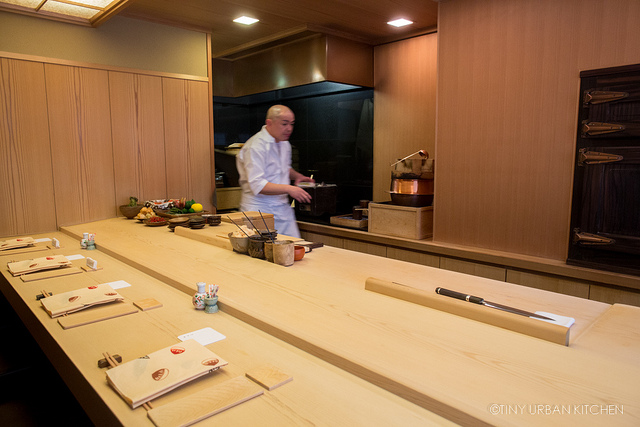
Sawada-san setting up
There’s no food, but at least I got the room.
We sit down.
Sawada’s wife asks us what we want to drink, and Bryan orders a Suntory Premium Malt.
Sawada-san hands us each a small, round green “nut” that resembles a green olive. It’s warm, salty, and slightly starchy. If you're curious what it looks like, check out this photo of the same ingredient from my Kikunoi kaiseki meal earlier that week. It reminds me a bit of a boiled peanut or roasted chestnut, but more flavorful and less starchy. I love it.
“What is this?”
He smiles. “Ginko nut. In season right now.”
Hirame (turbot) is next, followed by hirame fin, which is dense and chewy. Aori-ika (bigfin reef squid), is gorgeously soft yet dense. A juicy and tender piece of abalone is served with a salty jelly, and chutoro (fatty tuna) is blessed as being OK to eat with wasabi and soy sauce.
Sawada’s wife appears in the background and begins preparing hot stones on a miniature “grill” of sorts. It has a wire mesh top on which she places a couple pieces of fish.
We watch, mesmerized by the amber glow of the hot coals. She begins slowly searing two small pieces of fish, patiently turning the pieces with a skewer at regular intervals.
Meanwhile, Sawada continues to serve us. Shimesaba (marinated mackerel), dried sea cucumber egg, and shimotori, a maki roll filled with chu-otoro (half chutoro and half otoro fatty tuna), daikon and wasabi.
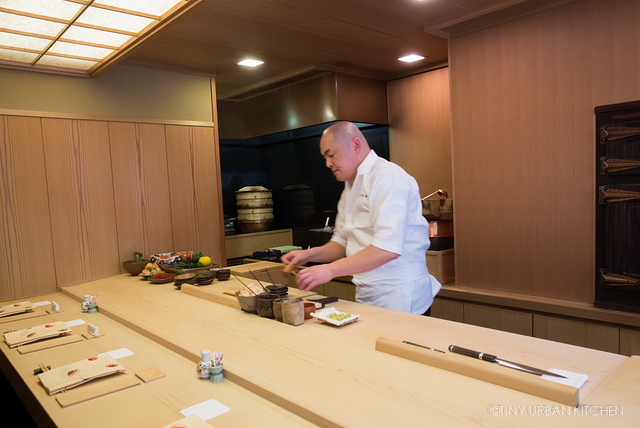
Sawada is a master at making rolls, and it’s fun to watch him execute. His knives are razor sharp, and he slices through the rolls with precision. As a palate cleanser, sort of a prelude to the nigiri, Sawada-san constructs a roll that’s just filled with fish, shiso, and chives. A single piece of rice acts as the glue to hold the roll together. It’s refreshingly crisp, successfully cleaning our palates in preparation for the second half of the meal.
We finish this first portion of the meal with a piece of seared otoro (super fatty tuna) with soy sauce. Though mine has just the slightest bit of “stringiness”, overall the piece is fabulous. This is always one of my favorite pieces, and this is no exception.
Bryan finishes his beer, so we switch to junmai sake, a pure grade of sake where no additional alcohol or starch is added during the production process. Sawada's wife refers to it as having a “medium” level of flavor and strength. We find it to be light, refreshing, and a perfect complement to the sushi.
Nigiri
We begin with kisu (smelt or smelt-whiting), a fish that Sawada-san says is “famous for its use in tempura.” Dense and salty, this fish has excellent texture and tastes very good, though it's borderline salty for my tastes. Akagai (giant red clam), is also salty and almost a bit crunchy. I love the fresh, “popping” texture of this fresh clam.
Sawada-san motions his hand towards his mouth.
“Hand eat. Hand eat.”
I don’t know this at the time, but there is an entire article on CNN that highlights Sawada-san’s rules about how to eat sushi. It’s an elaborate step-by-step photo tutorial that explains how you hold the nigiri (with your hands), flip it on one side, dip the fish part into the soy sauce, and then put it back into your mouth fish side face down on your tongue.
It all makes sense now.
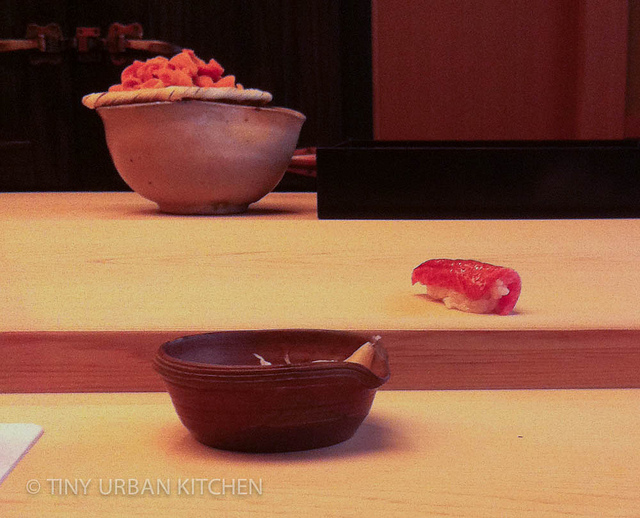
aka (red tuna) and some uni in a basket in the background
The gustatory exploration continues. Shima aji (horse mackerel) is gorgeously soft. It's followed by tairagi (razor clam) and then an ikura (salmon roe) gunkan roll (“warship” roll). I love the fresh flavors of the ikura. It's deep, briny, and flavorful - a far cry from the salt-bombs I've had in the US. Next is a “horizontal” tasting of tuna. We start with aka (red tuna), and progressively move up in fat level to various types of tuna belly: chutoro, chu-otoro, and otoro.
We're far from done. Sawada-san next begins us on a journey exploring Edomae sushi.
Edomae (often just called "Edo" style sushi) refers to a style of sushi that emerged in the late 1800's in Japan. Edomae literally means "in front of Edo", and the style uses only fish and seafood available during the Edo period when Tokyo was a shogun capital, about a hundred fifty years ago. Those that stay true to the style stick to only using seafood you can find in Tokyo Bay. Typically, they cure or marinate the fish, using techniques that were common back in the Edo days prior to the invention of refrigeration.
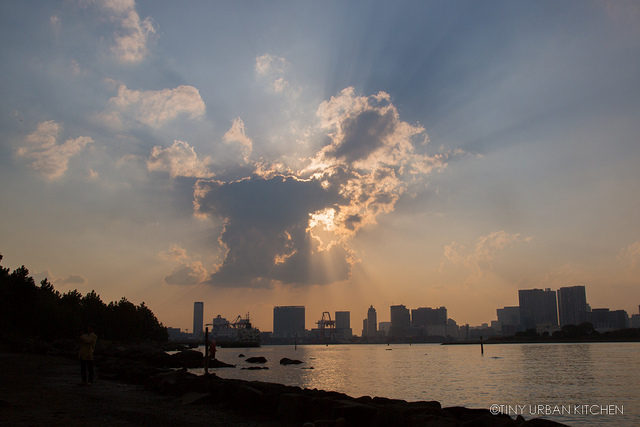
Tokyo Bay at Sunset
Katsuo (smoked bonito), is one of my favorites, beautifully smoky and salty. We also enjoy Edo-style ika (baby squid) filled with rice and sesame seeds. Continuing on the Edo journey, we sample Sawada’s own one-week marinated kohada (gizzard shad), which tastes “cooked” and has a tougher texture than the other pieces.
We move away from Tokyo Bay to sample uni (sea urchin) from Hokkaido, which is extremely fresh and sweet though just a tad too cold for my mouth. Anago (saltwater eel) is served cut in half, meant to be eaten two different ways. The first half we dip into wasabi and salt; the second half we dip into soy sauce only. This anago is the best I’ve ever had. It is so incredibly soft (melt-in-your-mouth) and sweet at the same time.
Finally, we end with the traditional piece of tamago (sweet egg omelet), the culminating piece of every omakase that is extremely difficult to execute well. The tamago is often the signature item that separates the mediocre from the masters (just watch Jiro Dreams of Sushi).
Sawada-san's tamago is nicely browned at the top. More like a sponge cake than a typical omelet, this finishing bite is sweet and delicate. Though it's not the most complex tamago I've had, it hold its own and is a perfect ending bite to this meal.
As a parting "dessert", Sawada-san hands us each a single gooseberry.
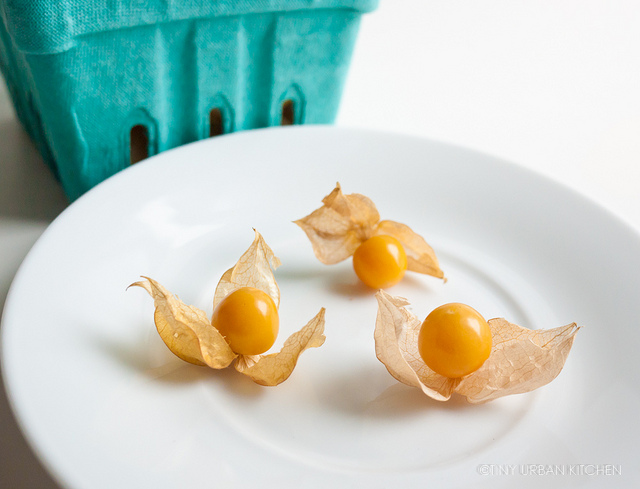
Fresh gooseberries from Massachusetts
Overall, the entire meal is exquisite. Sawada-san is jovial, outgoing, and friendly despite his limited (but perfectly workable) knowledge of English. At the end of our meal, we have gotten so chummy he’s telling us funny horror stories about his last trip to America.
“America is not like Japan. In America things are so often late! We wait wait wait. Then we fly to the next destination. Then we wait wait wait some more! Delay! Delay! So different from Japan, where everything always runs on time.”
He even share with us some of his favorite restaurants, places he likes to visit when he’s not working. Apparently, the man loves his tempura. In Azabajuban, he recommends Hatanaka Tempura, Gaiyen Mae, and Tempura Motoyoshi as places he likes to frequent.
On our way out, both Sawada-san and his wife treat us with the utmost respect. They escort us to the door, both bowing and wishing us well as we head out the restaurant.
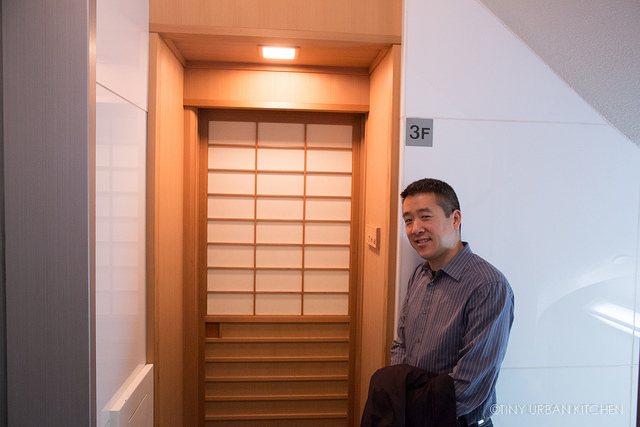
The Details
Similar to most sushi places in Japan, the restaurant is difficult to find. It seems to be customary to only use traditional characters for signs, so don’t expect to see any English signs pointing the way. Memorize the Japanese characters and read closely. Sawada is on the 3rd floor of an elevator building, so you’ll need to find the building before going up. Even with our GPS enabled phones, it still took us a few tries to find the right entrance to the correct building.
Reservations are notoriously difficult to obtain, and the rules surrounding them are unforgivingly harsh. A credit card is required for reservations, and there is a 100% fee for cancellations made with three days of the reservation. I made my reservation through my hotel concierge, who asked me to fax over a form that included my credit card information. The cost of a meal is the same regardless of whether it's lunch or dinner, and will be between 32000 and 35000 yen (all inclusive).
If it helps, I've included a picture of the front of the building below, so you'll have an easier time finding it than I did! The characters for "Sawada" number 3.
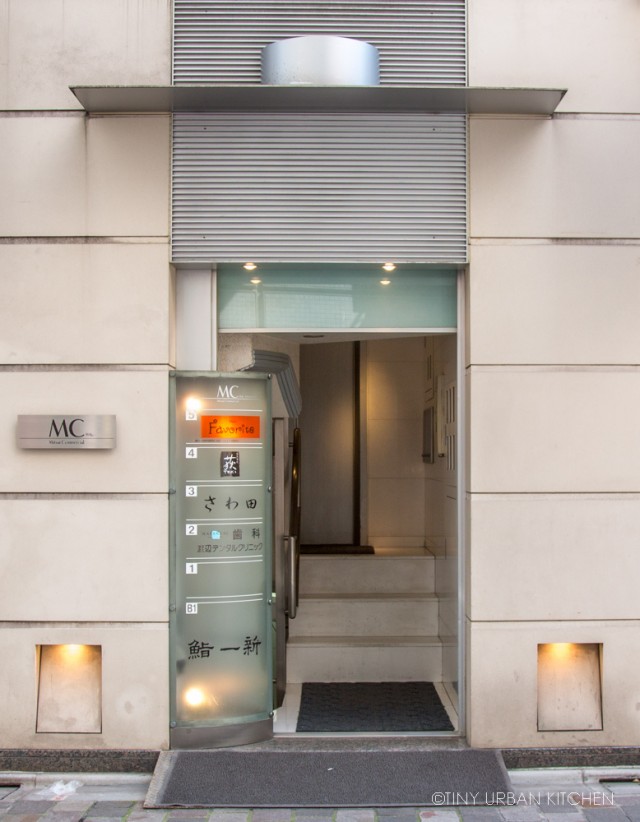
Final Thoughts
Sawada-san is definitely up there with the finest sushi masters in Tokyo. The quality of his fish is as good as it gets, and his sushi rice is excellent as well (though I still give Mizutani and Jiro a slight edge). I thought a few of the pieces were a tad saltier than I preferred, though Bryan thought they were just fine.
Overall, it still sits among the best sushi meals I've ever had. There is no other sushi dining experience that feels quite as personal, exclusive, and warm. It's fun to watch some of his unique techniques, such as the way he cooks his fish over hot stones. He's also really warm and friendly, which always makes a huge difference in the enjoyment of an omakase of this type.
It's not surprising that this is one of the most difficult reservations to get in Japan right now. At least he's young, so hopefully he'll be doing this for a long, long time.
All Rights Reserved

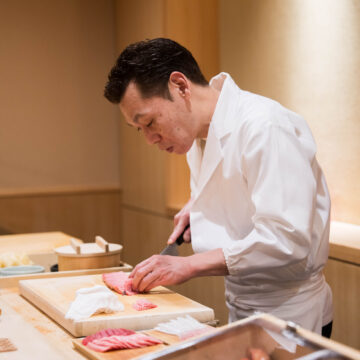

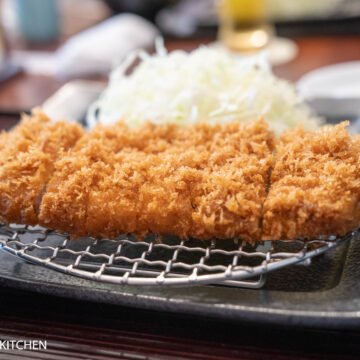
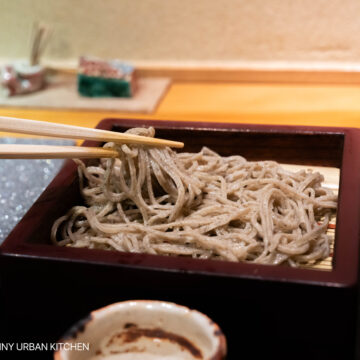
[…] http://www.tinyurbankitchen.com […]